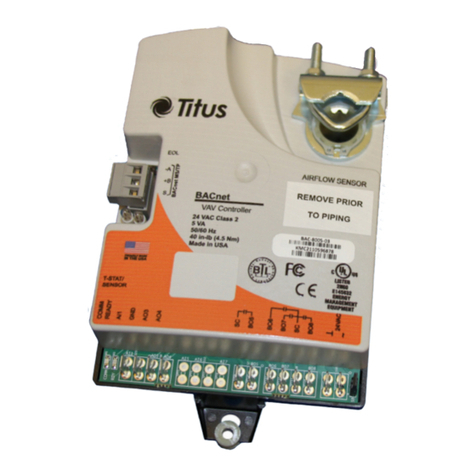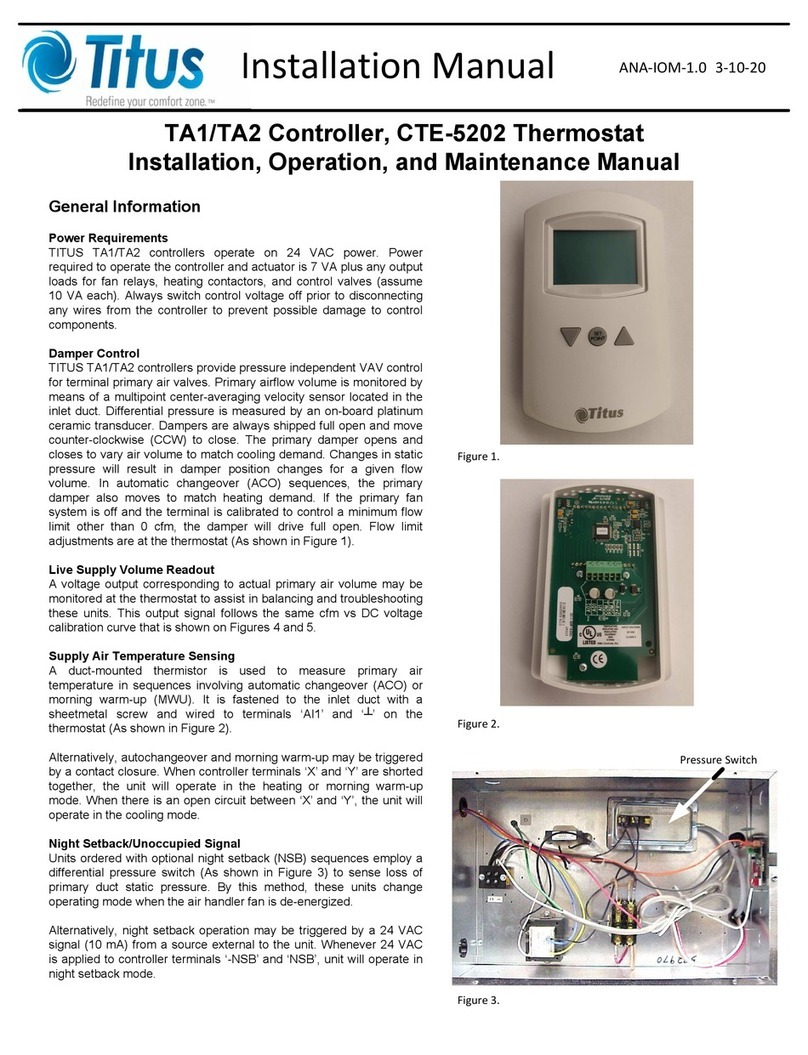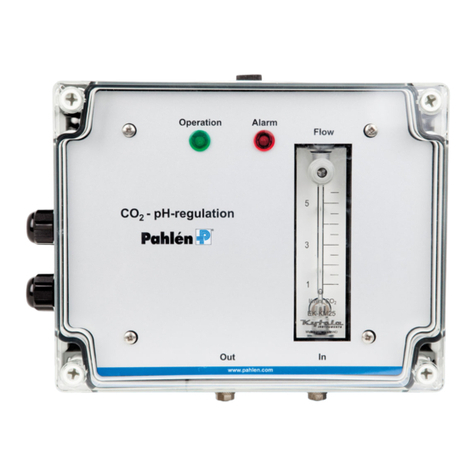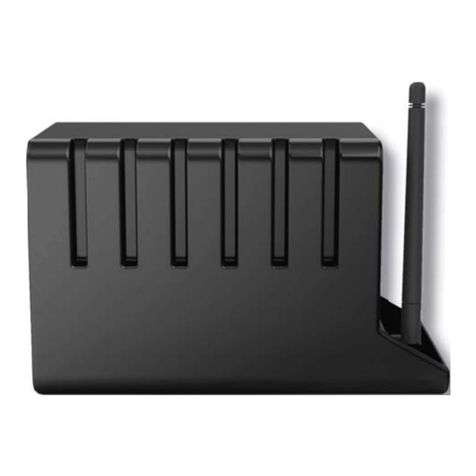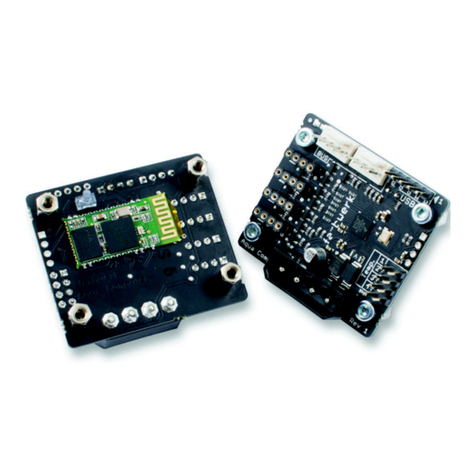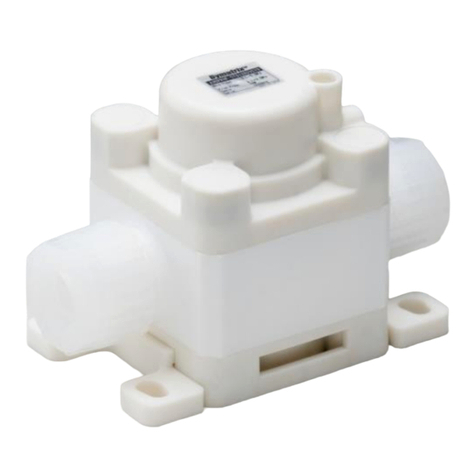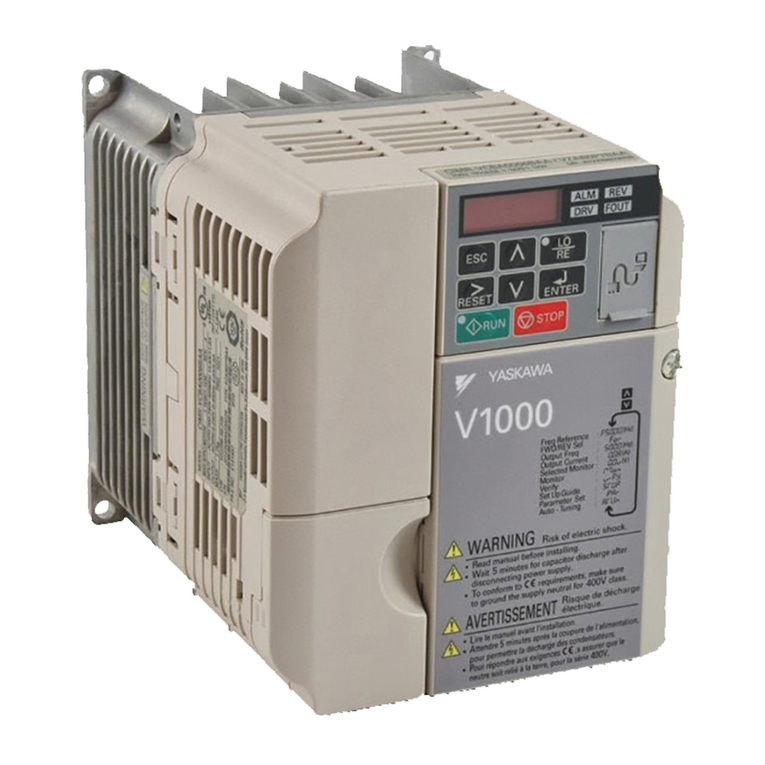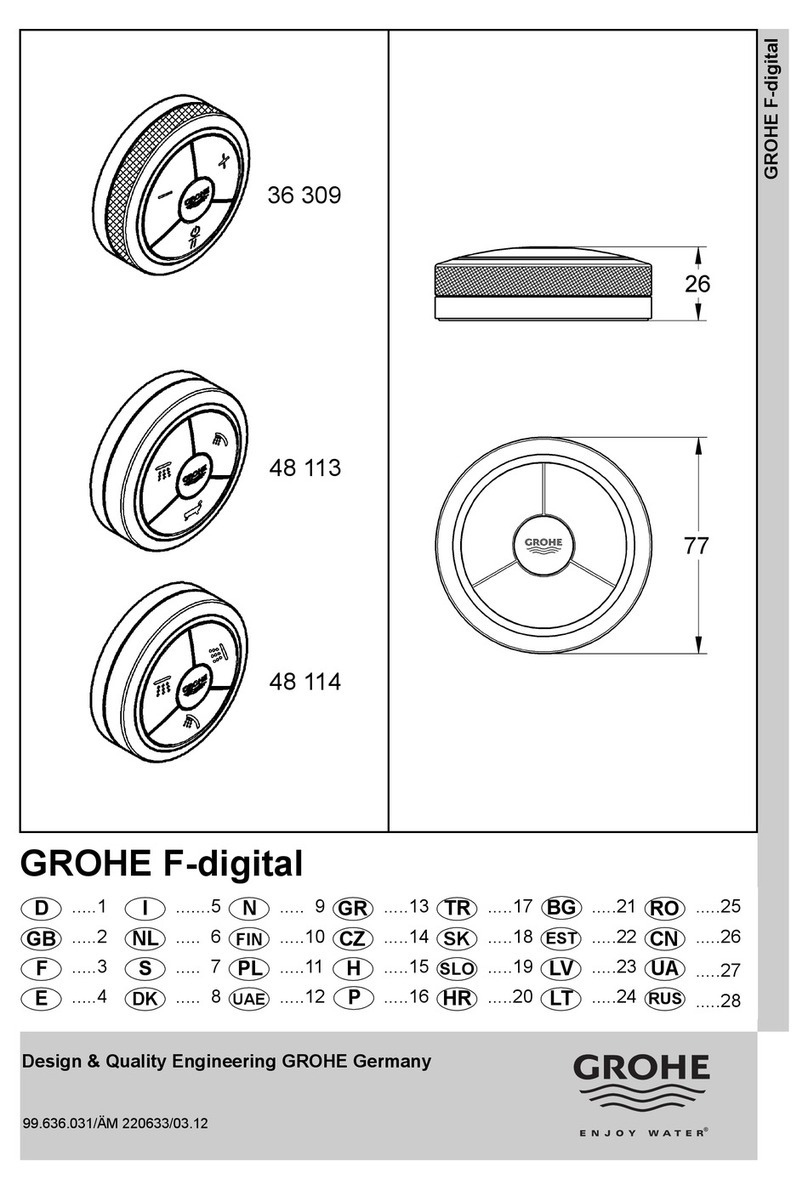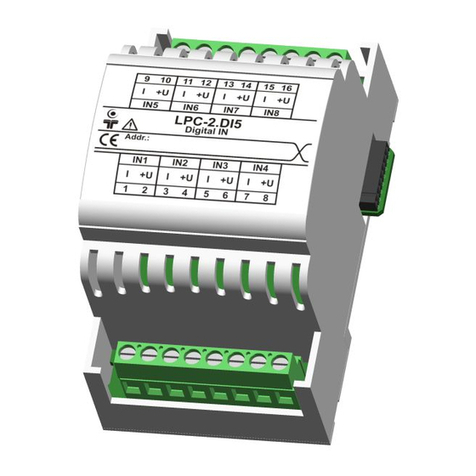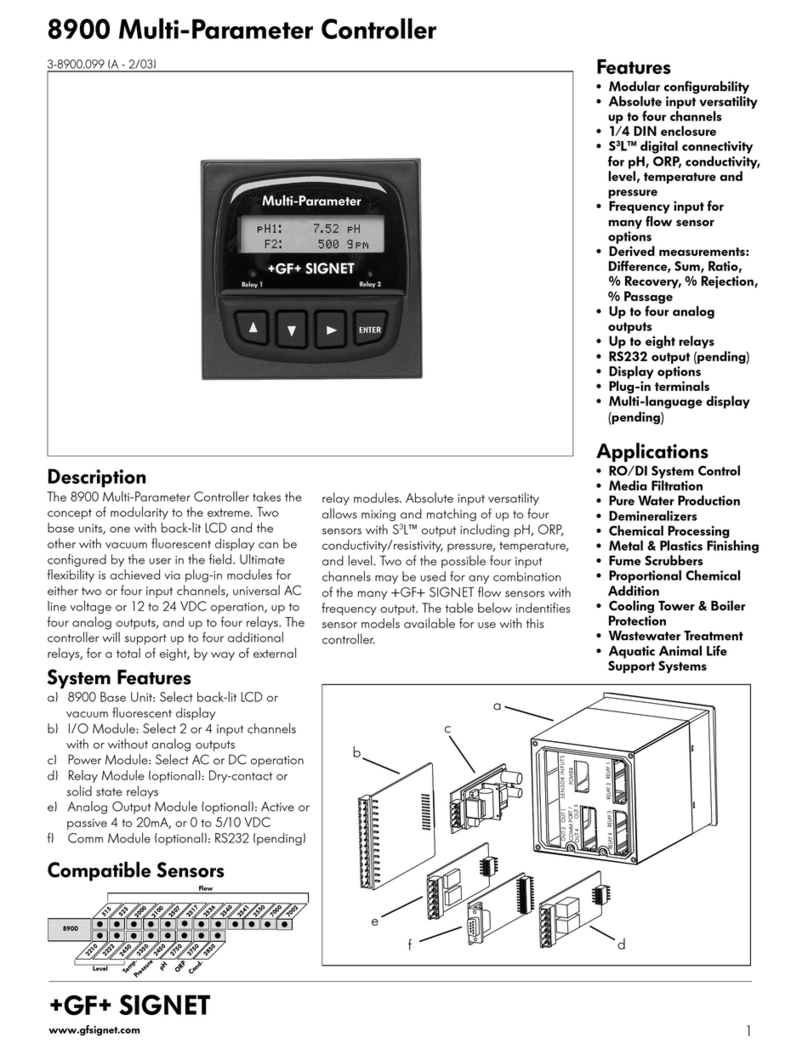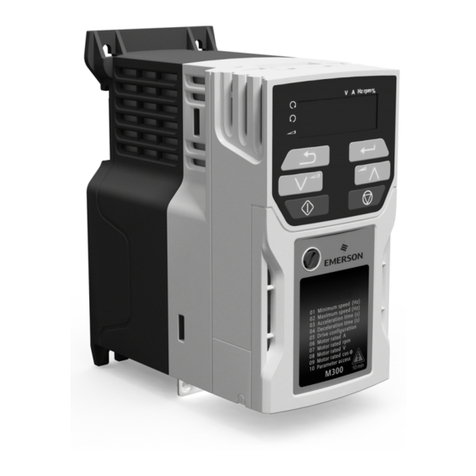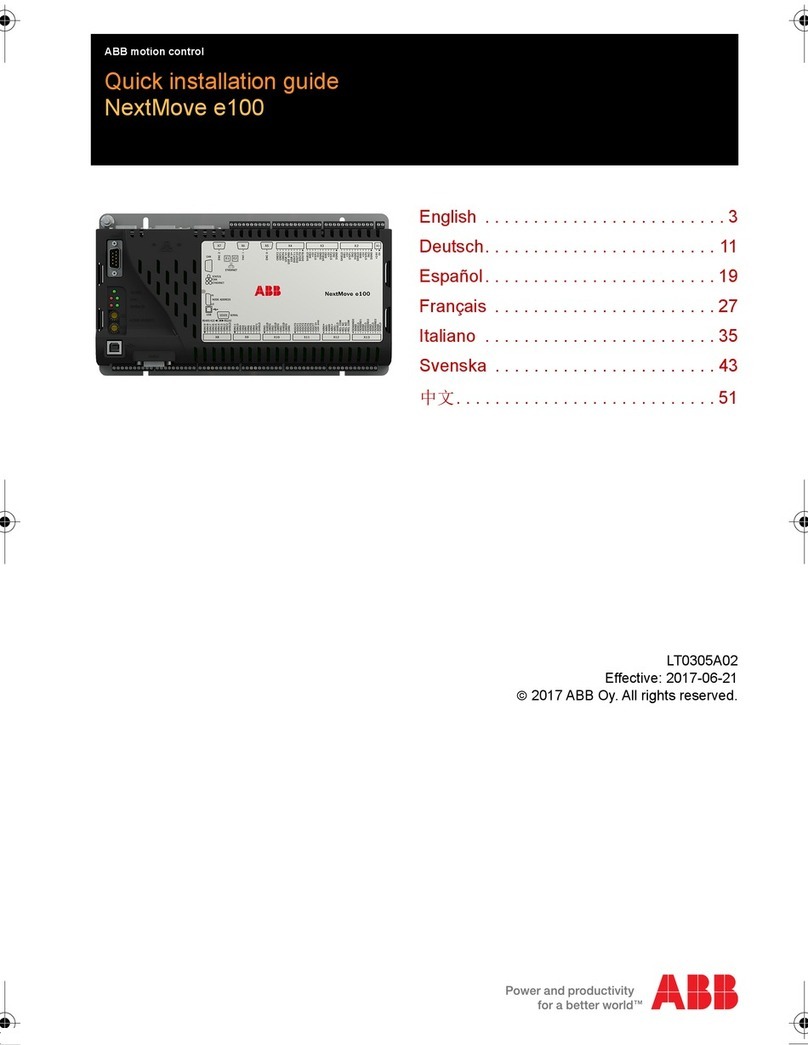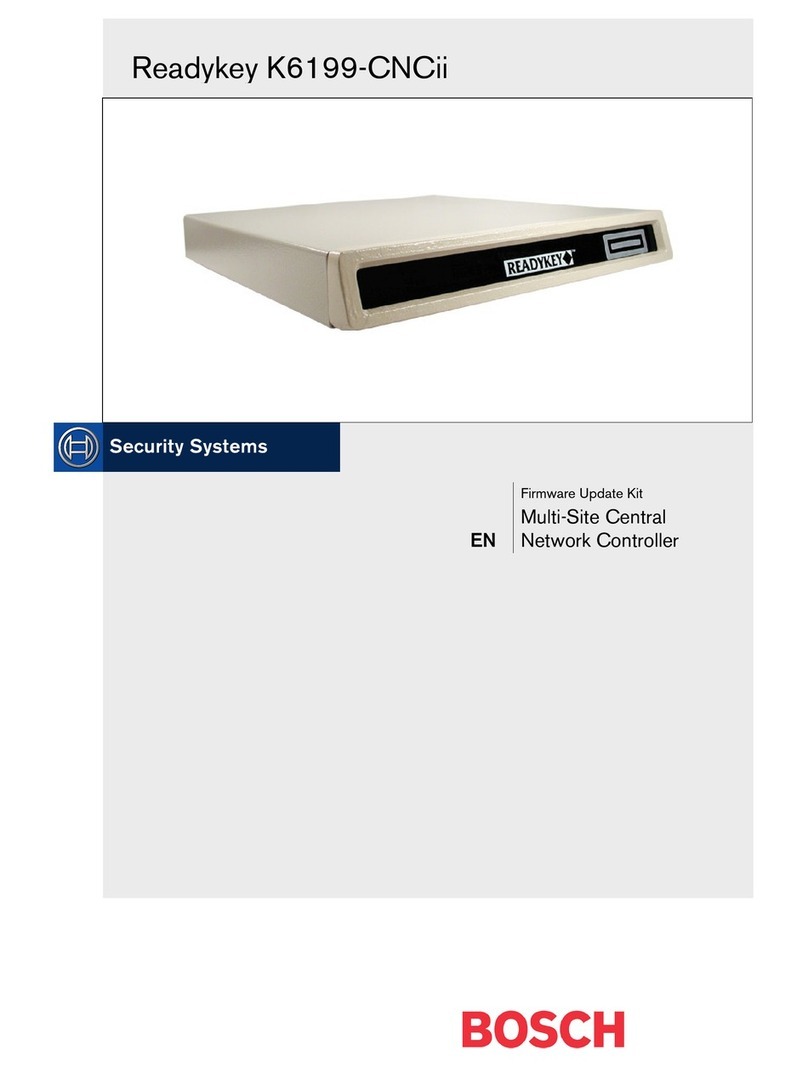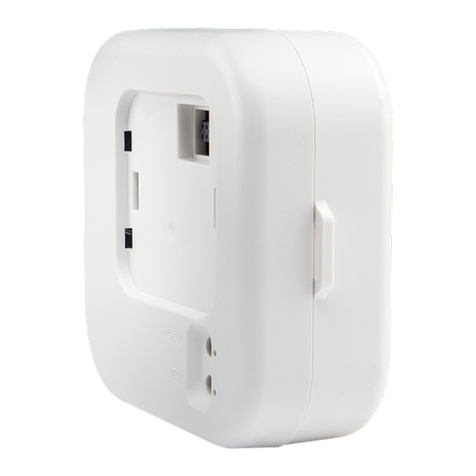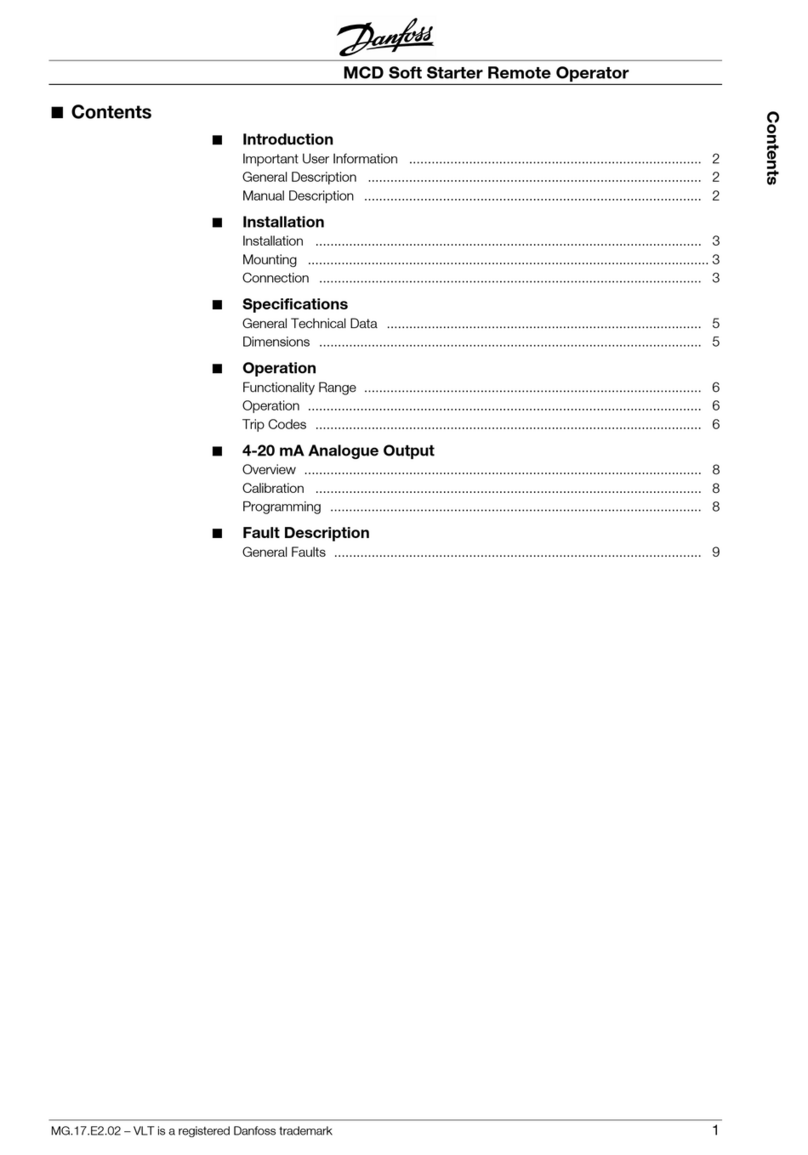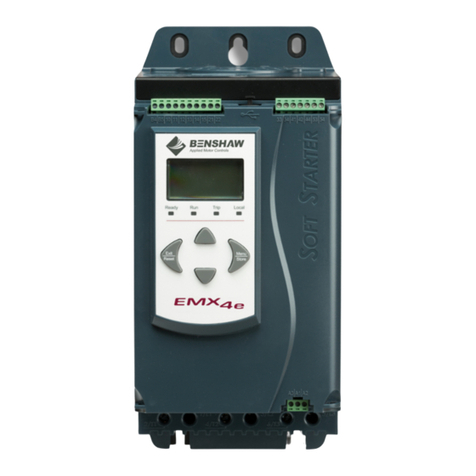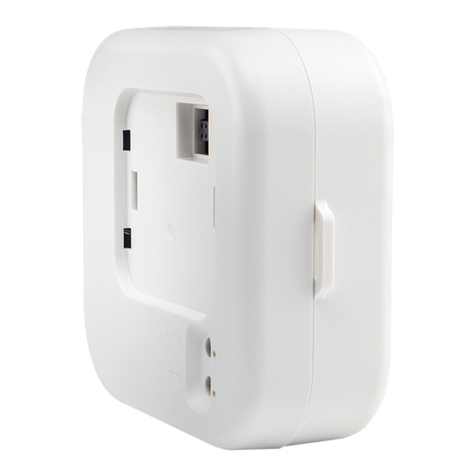Titus TA1 User manual

Installation Manual ANA-IOM-1.0 6-15-02
TA1/TA2 Controller
Installation, Operation, and Maintenance Manual
General Information
Power Requirements
TITUS TA1/TA2 controllers operate on 24 VAC power. Power
required to operate the controller and actuator is 7 VA plus any ou tput
loads for fan relays, heating contactors, and control valves (assume
10 VA each). Always switch control voltage off prior to disconnecting
any wires from the controller to prevent possible damage to control
components.
Damper Control
TITUS TA1/TA2 controllers provide pressure independent VAV
control for terminal primary air valves. Primary airflow volume is
monitored by means of a multipoint center-averaging velocity sensor
located in the inlet duct. Differential pressure is measured by an on-
board platinum ceramic transducer. Dampers are always shipped full
open and move counter-clockwise (CCW) to close. The primary
damper opens and closes to vary air volume to match cooling
demand. Changes in static pressure will result in damper position
changes for a given flow volume. In automatic changeover(ACO)
sequences, the primary damper also moves to match heating
demand. If the primary fan system is off and th e terminal is calibrated
to control a minimum flow limit other than 0 cfm, the damper will drive
full open. Flow limit adjustments are made using a digital DC
voltmeter at the thermostat (As shown in Figure 1).
Live Supply Volume Readout
A voltage output corresponding to actual primary air volume may be
monitored at the thermostat to assist in balancing and troubleshooting
these units. This output signal follows the same cfm vs DC voltage
calibration curve that is shown on Page 2. The same thermostat
calibration cable (TITUS P/N 100310-01) that is used to make airflow
limit adjustments is also used to read primary air volume on the
outermost meter taps. (As shown in Figure 2)
Supply Air Temperature Sensing
A duct-mounted thermistor is used to measure primary air
temperature in sequences involving automatic changeover (ACO) or
morning warm-up (MWU). It is fastened to the inlet duct with a
sheetmetal screw and wired to terminals ‘X’ and ‘Y’ on the controller.
Alternatively, autochangeover and morning warm-up may be trigger ed
by a contact closure. When controller terminals ‘X’ and ‘Y’ are shorted
together, the unit will operate in the heating or morning warm-up
mode. When there is an op en circuit between ‘X’ and ‘Y’, the unit will
operate in the cooling mode.
Night Setback/Unoccupied Signal
Units ordered with optional night setback (NSB) sequences employ a
differential pressure switch (As shown in Figure 3) to sense loss of
primary duct static pressure. By this method, these units change
operating mode when the air handler fan is de-energized.
Alternatively, night setback operation may be triggered by a 24 VAC
signal (10 mA) from a source external to the unit. Whenever 24 VAC
is applied to controller terminals ‘-NS B’ and ‘NSB’, unit will operate in
night setback mode.
Figure 1.
TITUS SYSTEMS
70 9050
HEATING COOLING
METER
TAPS
METER
TAPS
MAX/AUX
INCR
MIN
INCR
MIN
INCR
MAX
INCR
VV
Cooling Supply Volume
Meter Taps
Figure 2.
Figure 3.
Pressure Switch

TA1 Controller Voltage vs. Airflow Curves
0.0
1.0
2.0
3.0
4.0
5.0
6.0
7.0
8.0
9.0
0 200 400 600 800 1000 1200 1400
Airflow (CFM)
Output Voltage (DC Volts
)
4
5
6
7
8
9
TA1 Controller Voltage vs. Airflow Curves
0.0
1.0
2.0
3.0
4.0
5.0
6.0
7.0
8.0
9.0
0 5 00 1000 1 5 00 2 000 2 5 00 3 000 3 5 00 4 000 4 5 00 5 000 5 5 00 6 000 6 5 00 7 000 7 5 00 8 000
Airflow (CFM)
Output Voltage (DC Volts)
10
12
14
16
8x14
8x18
16x24
ANA-IOM-2.0 6-15-02
Figure 4.
Figure 5.
Table 1. AeroCrossTM K-Factors
Terminal
Size
04
05
06
07
08
09
10
12
14
16
8x14
8x18
40(16x24)
K-Factor
(CFM)
273
360
448
667
904
1167
1436
1891
3015
3839
2106
2498
7176

- NSB
NSB
A
12 V
OVR
TX REHEAT
PROP 0-10T1
T2
TEMP
DUCT
16V DC
V OUT
-
Y
X
+
-
24 VAC
-
OPN
CLS
COM
COM
FAN
1/2
2/3
/1
FLOW THRU SENSOR
.188 DIA. PORTS FOR 1/4" TABING
SNAP TRACK MOUNTING PROVIDED
.250 x .032
BLADE TERMINALS
WIRE CLAMP
TERMINALS
12-22 AWG
RA DA
RA/DA SELECT JUMPER
FOR REHEAT CONTROL
JUMPER CUT FOR CONTINOUS FAN
SET BACK RESISTOR PLUG-IN BLOCK
ANA-IOM-3.0 6-15-02
Night Setback Temperature Adjustment
Adjustment of setback temperature is made by means of a plug-in resistor
(As shown in Figure 6). All TA1 controls provide a 47k ohm resistor that
provides an approximate 10° F setback in heating. Other 1/4 watt resistors
may be substituted in the field to achieve various setback temperatures
(see Table 2).
Fan Control
The TITUS TA1 provides sequencing for continuous and intermittent unit
fan operation. Fan relays with 24 VAC coils (10 VA max) are wired to
terminal ‘FAN/1’. Fan will run intermittently for parallel fan sequences if
jumper ‘J1’ on board is intact. Cutting jumper ‘J1’ will result in continuous
operation during occupied mode suitable for series fan sequences. Fan
volume adjustments are made with a screwdriver by means of a silicon-
controlled rectifier (SCR) located on the side of the hi voltage control box.
(As shown in Figure 7)
On/Off Reheat Control
The TITUS TA1 provides sequencing for up to three stages of on/off heat.
Heat contactors with 24 VAC coils (10 VA max each) are wired to
terminals ‘Fan/1’, ‘1/2’, and ‘2/3’. Fan-powered sequences are limited to
two stages of heat. Two position, normally closed hot water valves (10 VA
max) are wired to ‘FAN/1’ for single duct sequences and ‘1/2’ for fan-
powered sequences. Jumper ‘J1’ must be intact to properly operate reheat
for single duct sequences.
Proportional Reheat Control
The TITUS TA1 provides sequencing for one stage of proportional heat.
Hot water valves with 0-10 VDC control signals (10 mA max) are wired
with (+) to terminal ‘T2’ on the thermostat and (-) to terminal ‘–’ on the
controller. (See Figure 6)
Thermostat Calibration
Thermostats are factory calibrated to specified flow limits. If field
adjustments are necessary, desired limit control can be calculated using
Table 1 and the following formulas, or Figures 4 and 5.
CFM = K[(0.1171 VDC) - 0.016]
VDC = {[CFM + (K x 0.016)]/(K x 0.1171)}
A digital DC voltmeter, allen wrench (1/16 in.), flat blade screwdriver (1/16
in. or 2 mm), and thermostat calibration cable (TITUS P/N 100310-01) are
recommended to perform these procedures. Remove thermostat cover by
turning set screws inward to retract. (As shown in Figure 8.) Always set
minimum flow limits before setting maximum flow limits. Voltages
corresponding to desired flow limits are read on a voltmeter by plugging
the calibration cable into the outermost meter taps on the face of the
thermostat. (As shown in Figure 8.) Heating is on the left, cooling on the
right.
Table 2.
Figure 6.
Figure 7.
TITUS SYSTEMS
70 9050
HEATING COOLING
METE R
TAPS
METER
TAPS
MAX/AUX
INCR
MIN
INCR
MIN
INCR
MAX
INCR
VV
T2, T4 SP SLIDER T1, T3 SP SLIDER
COVER MTG.
SCREWS
RETAINING
PINS
3 1.4"
METER TAPS
METER TAPS
(Heating) (Cooling)
Figure 8.
Setback (oF) Resistance (K Ohm)
Setback Resistor Values
4.5
5.0
5.5
6.5
7.0
8.0
9.0
10.0
11.0
12.5
14.0
15.5
17.0
19.0
22.0
25.0
27.0
100
91
82
75
68
62
56
51
47
43
39
36
33
30
27
24
22

ANA-IOM-4.0 6-15-02
Single Duct Terminal Units Without Reheat
Thermostat Calibration Procedure
Move thermostat slider full right. Adjust ‘COOLING MIN’ until
voltmeter (connected to the meter taps on the cooling side
outer taps) reads VDC corresponding to desired minimum flow
volume from Page 2. Move thermostat slider full left. Adjust
‘COOLING MAX’ until voltmeter reads VDC corresponding to
desired maximum flow volume from Page 2. Move thermostat
slider back and forth to verify flow settings. Set thermostat
slider to room temperature setpoint.
Optional Morning Warm-Up (MWU) Operation
If this option has been ordered, the unit damper will drive full
open regardless of flow limit settings whenever supply air
temperature is above 80° F.
Check-Out Procedure
Move thermostat slider full right. After a few minutes check to
see that unit has reached minimum flow li mit. Move thermostat
full left. After a few minutes check to see that unit has reach
maximum flow limit. Set thermostat slider back to room
temperature setpoint.
Single Duct Terminal Units with Reheat
Thermostat Calibration Procedure
Right thermostat slider is the cooling setpoint used to control
damper operation. Left thermostat slider is the heat ing setpoint
used to control reheat operation. Move right thermostat slider
full right. Move left slider full left. Adjust ‘COOLING MIN’ until
voltmeter (connected to the meter taps on the cooling side
outer taps) reads VDC corresponding to desired minimum flow
volume from Page 2. Move right thermostat slider full left.
Adjust ‘COOLING MAX’ until voltmeter reads VDC
corresponding to desired maximum flow volume from Page 2.
Move left thermostat slider full right. Adjust ‘HEATING MAX/
AUX’ until voltmeter (connected to the meter taps on the
heating side outer taps) reads VDC corresponding to desired
auxiliary flow volume from Page 2. (Note: Auxiliary Flow Limit
is disabled by adjusting full counter-clockwise. When used,
Auxiliary Flow Limit must be set higher than Cooling Minimum
Flow Limit). Move thermostat sliders back and forth to verify
flow settings. Set thermostat sliders back to room temperature
setpoints.
Check-Out Procedure
Move both thermostat sliders full left. After a few minutes
check to see that unit has reached maximum flow limit with
reheat off. Move right thermostat slider full right. After a few
minutes check to see that unit has reached minimum flow limit
with reheat off. Slowly move left thermostat slider full right. If
auxiliary flow limit has been disabled, reheat stages should
energize immediately. If auxiliary flow settings have been
made, allow several minutes for reheat to energize. Set
thermostat sliders back to room temperature setpoints.
Single Duct Terminal Units with Heating/
Cooling Autochangeover(ACO)
Thermostat Calibration Procedure
Right thermostat slider is the cooling setpoint used to control
damper operation when supply air is below 70° F. Left
thermostat slider is the heating setpoint used to control
operation when supply air is above 80° F. Move right
thermostat slider full right. Adjust ‘COOLING MIN’ until
voltmeter reads VDC corresponding to desired minimum flow
volume from Page 2. Move thermostat slider full left. Adjust
‘COOLING MAX’ until voltmeter reads VDC corresponding to
desired maximum flow volume from Page 2. Move left
thermostat slider full left. Adjust ‘HEATING MIN’ until voltmeter
reads VDC corresponding to desired minimum flow volume
from Table A, B, and C. Move left thermostat slider full right.
Adjust ‘HEATING MAX/AUX’ until voltmeter reads VDC
corresponding to desired maximum flow volume from Table A,
B, and C. Move thermostat sliders back and forth to verify flow
settings. Set thermostat sliders to room temperature setpoints.
Check-Out Procedure
With primary fan system supplying cold air (below 70° F),
move right thermostat slider full right. After a few minutes
check to see that unit has reached minimum flow limit. Move
right thermostat slider full left. After a few minutes che ck to see
that unit has reached maximum flow limit. With primary fan
system supplying hot air (above 80° F), move left thermostat
slider full left. After a few minutes check to see that unit has
reached minimum flow limit. Move left thermostat slider full
right. After a few minutes check to see that unit has reached
maximum flow limit. Set thermostat sliders back to room
temperature setpoints.
Important Operational Note
To guarantee proper autochangeover operation, it is
recommended that minimum flow limits are used for both
heating and cooling modes. This allows airflow to constantly
pass through the unit for accurate supply air temperature
measurement.
Fan Powered Terminal Units without Heat
Thermostat Calibration Procedure
Move thermostat slider full right. Adjust ‘COOLING MIN’ until
voltmeter (connected to the meter taps on the cooling side
outer taps) reads VDC corresponding to desired minimum flow
volume from Page 2.
Optional Morning Warm-Up (MWU) Operation
If this option has been ordered, the unit damper will drive full
open regardless of flow limit settings whenever supply air
temperature is above 80° F.
Optional Night Shutdown (NSD) Operation
Units ordered with optional night shutdown (NSD) sequences
employ a differential pressure switch to sense loss of supply
duct static pressure. By this method, these units change
operating mode when the air handler fan is de-energized. If
this option has been ordered, the unit fan will de-energize
whenever the air handler unit (AHU) is off. If a minimum flow
limit has been set at the thermostat, the unit damper will drive
full open.
Optional Night Setback (NSB) Operation
Units ordered with optional night setback (NSB) sequences
employ a differential pressure switch to sense loss of supply
duct static pressure. By this method, these units change
operating mode when the air handler fan is de-energized. If
this option has been ordered, the unit fan will operate
intermittently to maintain a temperatur e setpoint approximately
10° F below the thermostat setting whenever the air handler
unit (AHU) is off. If a minimum flow limit has been set at the
thermostat, the unit damper will drive full open.

ANA-IOM-5.0 6-15-02
Check-Out Procedure (Day/Occupied Mode)
Fan should be energized regardless of slider position o n series
fan-powered units (ATQS/AFLS). Move thermostat slider full
right to energize fan on parallel fan-powered units (ATQP/
AFLP). Move slider full left. After a few minutes check to see
that unit has reached maximum flow limit. Move slider full right.
After a few minutes check to see that unit has reached
minimum flow limit. Set thermostat slider back to room
temperature setpoint.
Check-Out Procedure (Night/Unoccupied Mode)
Move thermostat slider full right to energize fan.
Fan Powered Terminal Units with Heat
Thermostat Calibration Procedure
Right thermostat slider is the cooling setpoint used to control
damper operation. Left thermostat slider is the heat ing setpoint
used to control reheat operation and seq uenced fan operation.
Move right thermostat slider full right. Adjust ‘COOLING MIN’
until voltmeter (connected to the meter taps on the cooling side
outer taps) reads VDC corresponding to desired minimum flow
volume from Page 2. Move right thermostat slider full left.
Adjust ‘COOLING MAX’ until voltmeter reads VDC
corresponding to desired maximum flow volume from Page 2.
Adjust ‘HEATING MIN’ fully counter clockwise (CCW). Adjust
‘HEATING MAX/AUX’ fully clockwise (CW). Move right
thermostat slider back and forth to verify flow settings. Set
thermostat sliders to room temperature setpoint.
Optional Night Shutdown (NSD) Operation
Units ordered with optional night shutdown (NSD) sequences
employ a differential pressure switch to sense loss of supply
duct static pressure. By this method, these units change
operating mode when the air handler fan is de-energized. If
this option has been ordered, the unit fan will de-energize
whenever the air handler unit (AHU) is off. This will effectively
lock-out all heat operation. If a minimum flow limit has been set
at the thermostat, the unit damper will drive full open.
Optional Night Setback (NSB) Operation
Units ordered with optional night setback (NSB) sequences
employ a differential pressure switch to sense loss of supply
duct static pressure. By this method, these units change
operating mode when the air handler fan is de-energized. If
this option has been ordered, the unit fan and heat will operate
intermittently to maintain a temperatur e setpoint approximately
10° F below the thermostat heating setpoint whenever the air
handler unit (AHU) is off. If a minimum flow limit has been set
at the thermostat, the unit damper will drive full open.
Check-Out Procedure (Day/Occupied Mode)
Fan should be energized regardless of slider position o n series
fan powered units (ATQS/AFLS). Move left thermostat slider
full right to energize fan on parallel fan powered units. (ATQP/
AFLP). Move both sliders full left. After a few minutes check to
see that unit has reached maximum flow limit with reheat off.
Move right slider full right. After a few minutes check to see
that unit has reach minimum flow limit with heat off. Move left
slider full right to energize heat. Set thermostat sliders back to
room temperature setpoints.
Check-Out Procedure (Night/Unoccupied Mode)
Move thermostat slider full right to energize fan and reheat.
Troubleshooting Procedures
NOTE: TURN OFF POWER BEFORE MAKING ANY WIRING
CHANGES TO THE UNIT FOR TROUBLE SHOOTING
To Check Operation of Controller’s Damper Output Circuit
and Actuator
Disconnect wire from terminal ‘T1’ on controller and put a wire
nut on it. If unit is equipped with morning warm-up or
autochangeover, disconnect wire from terminal ‘Y’ on control ler
and put a wire nut on it. Connect a jumper wire between
terminals ‘16 VDC’ and ‘T1’, and observe actuator driving
damper full open. Move jumper wire to connect terminals ‘–’
and ‘T1’, and observe actuator driving damper full closed.
Remove jumper wire and reconnect wires to terminals ‘T1’ and
‘Y’.
If an Actuator Appears to be Inoperative
Check to see if the damper blade is free to move and that the
actuator gears are engaged. Press in the red linkage release
button on the actuator. It should be possible to turn the
actuator collar whenever this button is held down. After
releasing the button always check to make sure the collar is
properly engaged by attempting to turn it by hand. No
movement should be possible when the button is released.
To Check Operation of Controller’s On/Off Reheat Output
Circuit
Disconnect wire from terminal ‘TX REHEAT’ and put a wire nut
on it. Connect a jumper wire between terminals ‘16 VDC’ and
‘TX REHEAT’ and observe that all heat stages are energized.
If Reheat Stages are On When They Should be Off
Check the RA/DA jumper on controller to see if position
matches that shown on unit wiring diagram. Whenever
replacement controllers are installed it is necessary to locate
the jumper in the correct position. If jumper is correctly
installed on a fan powered unit but problems persist,
recalibrate heating side of thermostat.
If Desired Thermostat Voltage Settings Cannot be
Achieved
Make sure that minimum flow limit setting is made prior to
setting maximum flow limit setting. If procedures are followed
correctly and problem persists, thermostat will need to be
replaced. If a thermostat slider has ever been removed and
replaced this problem is likely to occur. This happens when a
slider is incorrectly indexed on the geared wheel that it
operates, resulting in temperature scaling error.
If Voltage Readings Float or Appear to be Unstable During
Thermostat Calibration
Check to make sure that the wire connecting ‘–’ on the
thermostat to ‘–’ on the controller is tight and properly
connected. This is the reference ground wire for the regulated
16 VDC thermostat supply output. A loose connection will
result in unstable readings due in part to atmospheric static
electricity.
If Unit Fan Runs Intermittently During Day/Occupied
Operation on a Series Fan Powered Terminal
Check the ‘J1’ jumper on controller to see if it has been cut.
When this jumper is cut and removed, fan will r un continuously
for Day/Occupied mode. This jumper should be left intact for a ll
applications other than series fan powered terminals.

ANA-IOM-6.0 6-15-02
Description Vendor Part # TITUS Part #
Controllers and Actuators
TITUS TA1 Controller (5 outputs - handles all applications) CSE-5111 10303201
TITUS TA2 Controller (2 outputs) CSE-5112 10303301
TITUS Actuator, 24V MEP-5001 10268101
Room Thermostats and Accessories
Cooling Only (AESV/AECV/AQCV/ATQS/ATQP/AFLS/AFLP) CTE-5101 10269601
Heating/Cooling Autochangeover (AESV/AECV) CTE-5103 10269603
Cooling with Reheat/Aux Heat (AESV/AECV/AQCV) CTE-5104 10269604
Cooling with Reheat/Aux Heat (ATQS/ATQP/AFLS/AFLP) CTE-5103 10269603
Cooling with Proportional Reheat (AESV/AECV/AQCV) CTE-5104 10269604
Cooling with Proportional Reheat (ATQS/ATQP/AFLS/AFLP) CTE-5103 10269603
Thermostat Sheetrock Mounting Bracket HMO-5023 10307301
Thermostat Surface Mount Sub-Base HMO-5030 10307401
Thermostat Calibration Cable HSO-5001 10031001
Transformers
24V to 24V 10166601
120V to 24V 10005801
208/240V to 24V 10057501
277V to 24V 10006601
480V to 24V 10100301
Miscellaneous
Duct Temperature Sensor 10306501
Constant Volume Module (ZECV/ZQCV) REE-1004 10171101
Air Flow Switch (Night Setback/Night Shutdown) 10269501
Fan Relay (24V, SPST Contacts) 10156901
Switching Relay (24V, DPDT Contacts) (Night Setback) 10161801
Toggle Disconnect Switch 10027801
Proportional Reheat Water Valves (Analog Controls)
Actuator with Valve Body, 1/2”, Cv = 0.7, Two-Way 0691P0281EA00 10307501
Actuator with Valve Body, 1/2”, Cv = 0.7, Three-Way 0691P0291EA00 10307502
Actuator with Valve Body, 1/2”, Cv = 1.5, Two-Way 0691P0282EA00 10307503
Actuator with Valve Body, 1/2”, Cv = 1.5, Three-Way 0691P0292EA00 10307504
Actuator with Valve Body, 3/4”, Cv = 2.5, Two-Way 0691P0283EA00 10307505
Actuator with Valve Body, 3/4”, Cv = 2.5, Three-Way 0691P0293EA00 10307506
On/Off Reheat Water Valves
Actuator, 24V MEP3001 10156001
Valve Body, 1/2”, 2.0 Cv, Two-Way VFP-111301 10155401
Valve Body, 3/4”, 2.9 Cv, Two-Way VFP-111701 10155403
Valve Body, 1/2”, 1.7 Cv, Three-Way VFP341901 10155405
Valve Body, 3/4”, 4.9 Cv, Three-Way VFP342001 10155406
- must include Valve Nipple (3 required) 10186001
This manual suits for next models
1
Table of contents
Other Titus Controllers manuals
